This is the fourth part in a five part series on the Karnali River.
Faith to reality: A journey down the Karnali River from Tibet to India
Part 1: Living in fear of floods
Part 2: Dams and dreams – a journey down the Karnali
Part 3: Ignoring climate change in the Himalayas
Sixty-two year old Parash Nath Kashyap had to move home three times in two decades due to floods and erosion along the Ghraagha River in the Bahraich district of northern India’s Uttar Pradesh state. “Sir, how different our life 20 years was from now,” said Parashnath, dragging a charpai (woven bed) under the shade of a tree behind the left embankment of the Ghaghara River in Jogapurwa — 30 kilometres west of Bahraich city.
In 2000, severe floods washed away his family’s land so they moved about a kilometre east. The flood in 2002 forced them to move again. In 2008, they moved a kilometre away again and then stayed there behind the embankment, encroaching on some private and government land. “It’s like hide and seek; we move as the river moves,” he said.
As we walked about half a kilometre to see the large flood plains that were once farmland, he said, “For years we have danced as the river does, but with our eyes full of tears.”
The Ghaghara – the name of the Karnali River once it reaches India – is part of the Ganga basin. The Gangetic plains of northern India are one of the most flood-affected regions in the world. About 93 million people were affected by floods in the Ganga basin between 2000 and 2014. According to a 2018 report from the International Water Management Institute, there were 326 extreme flood events in the Ganga basin between 1980 to 2015 resulting in 67,000 casualties. Of these 212 floods were in India, 74 in Bangladesh and 40 in Nepal. China accounts for 4% of the basin, but there is almost no information about floods there, the report states.
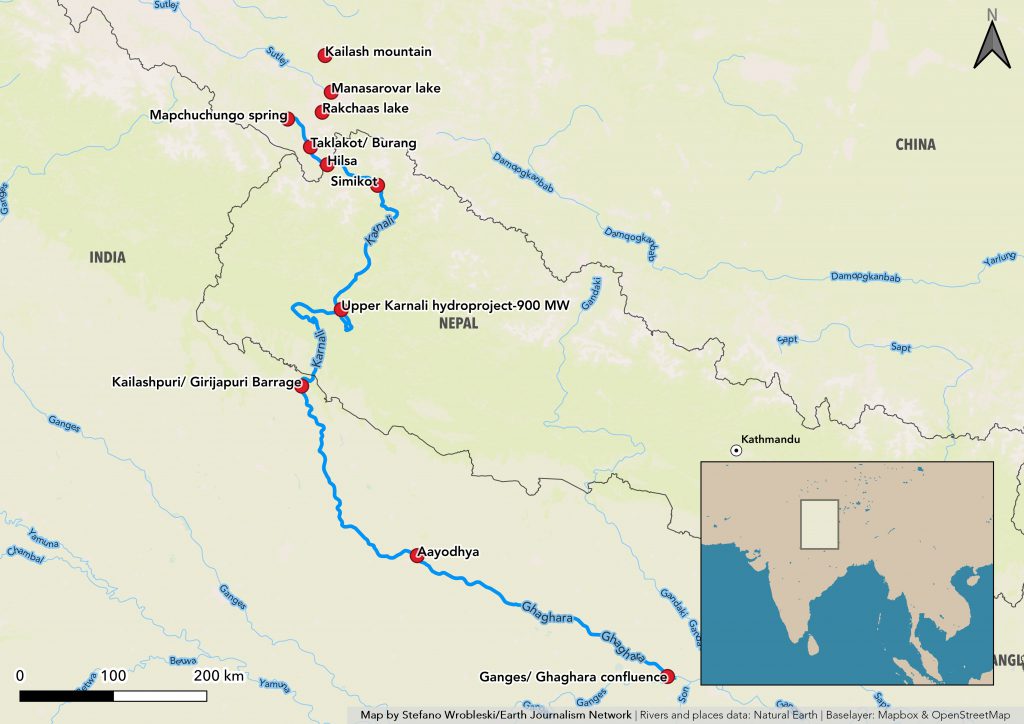
Burgeoning problems
After the river engulfed more land in Jogapurwa of Uttar Pradesh, the number of people living in temporary settlements has grown. This has led to a web of social problems in recent years. “People living far from the embankment (our relatives) don’t want to get their daughters to marry our boys as we live in a very vulnerable situation,” said Parashnath.
He knew that problems would get worse when he was first displaced in 2000, so he married off his daughters as early as possible while he had some money left. As he lost his land his economic condition deteriorated. “We have land certificates but we are landless because the river is flowing over where we used to live,” he said.
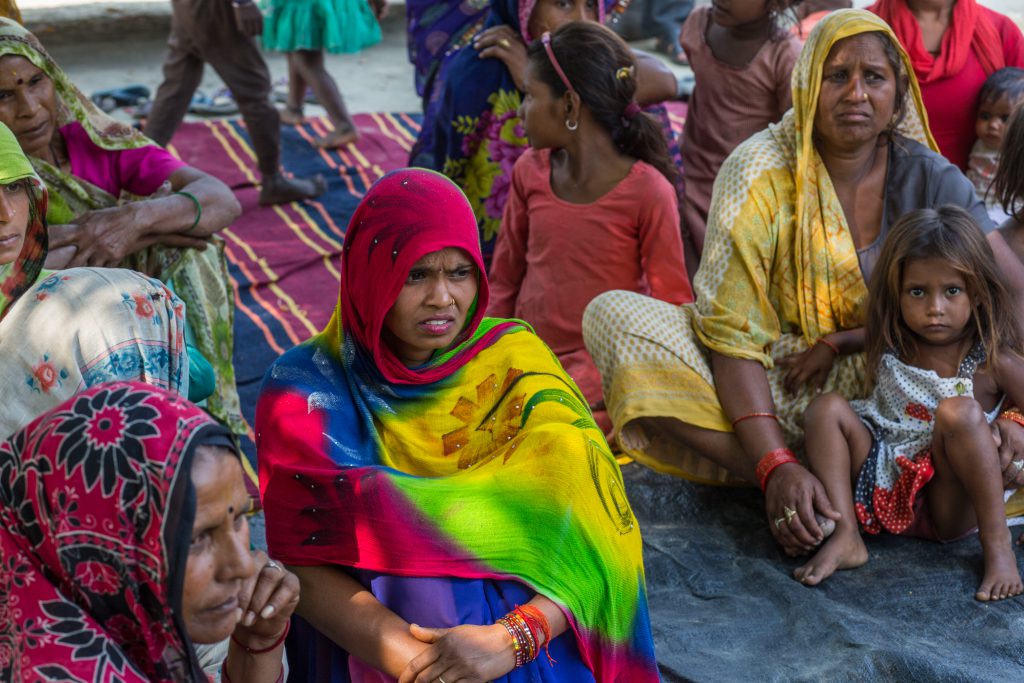
“We cultivate some vegetables on the sandy land in the dry season. You can’t imagine how big this river is in the monsoon,” said Kamlesh Kashyap, another victim of the floods. This land is far from where they live, so their vegetables are often stolen or eaten by animals. “If boys were here, they could guard the land at night, but women can’t because it’s very unsafe,” Parashnath Kashyap said.
Displaced people who move to the cities have access only to low status and low income jobs, like dish-washing or toilet cleaning, since very few had been to school, Kashyap explained.
The farming community has been totally devastated. As we started talking to the residents, we saw children who should have been in school. “Most of them have to herd animals so parents are reluctant to send them to school,” Kashyap added. These children don’t have enough to eat either. “Parents are forced to sell most of the milk from their cows or buffaloes,” said Dhrub Kumar, director of Panchasheel Development Trust which works with displaced communities.

So his family decided to stay in the hope that Ghaghara would change course someday and they would get back to their land. Some people moved to the government provided land, but later they returned to the embankment. “We are all low caste people but the new land was dominated by higher caste people so we were afraid we would be harassed,” said 56-year-old Chandran Bhaal.
![Chandra Vahal, a flood victim in Jogapurwa village in Bahraich district of Uttar Pradesh state, showing the level of the flood waters that submerged his make shift houses by last monsoon [image by: Nabin Baral]](https://dialogue.earth/content/uploads/2019/01/photos-for-story-four-4-1024x683.jpg)
The Karnali River traverses the mountains from Tibet through Nepal and becomes the Ghaghara in Uttar Pradesh in northern India. Uttar Pradesh is one of the most flood affected states in India after Bihar, West Bengal, Assam and Orissa.
About 16 kilometres below the Nepal border in Kailali district, Girijapuri barrage was built in the late 1970s to divert water for irrigation to central Uttar Pradesh, including Lucknow and Varanasi. Much of the water is diverted west to the Sharada River — another tributary of the Ganga. “We are killing this river by diverting most of the water for irrigation and leaving the downstream areas dry. More than 80 kilometres of embankments have been built along the river and more are under planning,” said Dhrub Kumar.
According to the studies, the Ghaghara started shifting course particularly after 1995. The Gangetic plains are relatively flat, and after the steep decline from the Himalayas, the rivers shift course in the plains fairly easily, especially when they swell during the monsoons. According to the National Disaster Management Authority of India, about 2.7 million hectares out of 24.1 million hectares of land in the state is affected by floods every year, with an estimated loss of more than INR 4 billion (USD 57 million). After the massive flood in 2000, floods have caused increasingly more damage.
Debates whether embankments are the right way to deal with floods are not new, but the problem is getting bigger as more money has been invested in this solution over the past decades.
![An embankment to control floods in the Ghaghara river near to the Ganga/Ghaghara confluence at the border of Uttar Pradesh and Bihar [image by: Nabin Baral]](https://dialogue.earth/content/uploads/2019/01/photos-for-story-four-7-1024x683.jpg)
Bloated corruption
Many argue it is only the corrupt contractors, bureaucrats, technocrats and politicians who have benefited, making billions from constructing embankments despite the failure to curb the floods. “Long-term solutions are not a priority, but immediate relief and embankments have always been priority. It clearly shows that money is the motivation behind [embankment building],” said Ajit Dixit, a journalist based in Cornelganj in Gonda district, south of Bahraich.
Governments are supposed to protect people but many say they are not moving in the right direction. “The best way is to maintain the river channels in their natural course and keep the communities away as much as possible,” Benette added. While the population is growing rapidly and land encroachments near the rivers have become a serious problem, this seems impossible. It is easy for people to settle in these areas and this leaves them vulnerable to the inevitable floods as the choked river overflows.
![Hare Ram and his wife sow pointed gourd in the sandy soil at the confluence of the Ghaghara and the Ganga in Chhara district of Bihar [image by: Nabin Baral]](https://dialogue.earth/content/uploads/2019/01/photos-for-story-four-6-1024x683.jpg)
While the construction of embankments started during British rule, the majority were built after India’s independence in 1947. According to the World Banks’s 2014 report, about 16,200 kilometres of embankments were constructed between 1954 and 1997 in India alone and authorities claim this has protected about 17 out of 40 million hectares of flood prone lands along the Ganga. This shows the scale of the problem.
“There isn’t one solution, but it is important to build a better understanding of rivers and planning should be done accordingly, otherwise the huge investment will be futile and [flood] threats won’t be reduced,” Benette added.
This story is jointly published by thethirdpole.net and Nepali Times.

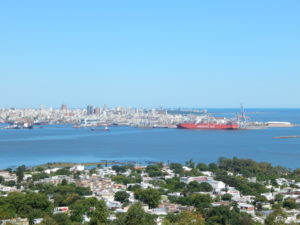
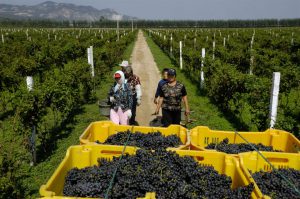
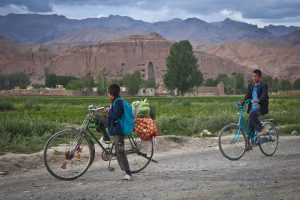
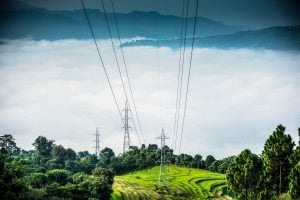


![Kagbeni is a small village located in the Kali-Gandaki Valley. The Gandaki River originates in the Himalayas and flows through [image by: Justin Falcone]](https://dialogue.earth/content/uploads/2019/01/Mustang1-300x200.jpeg)
